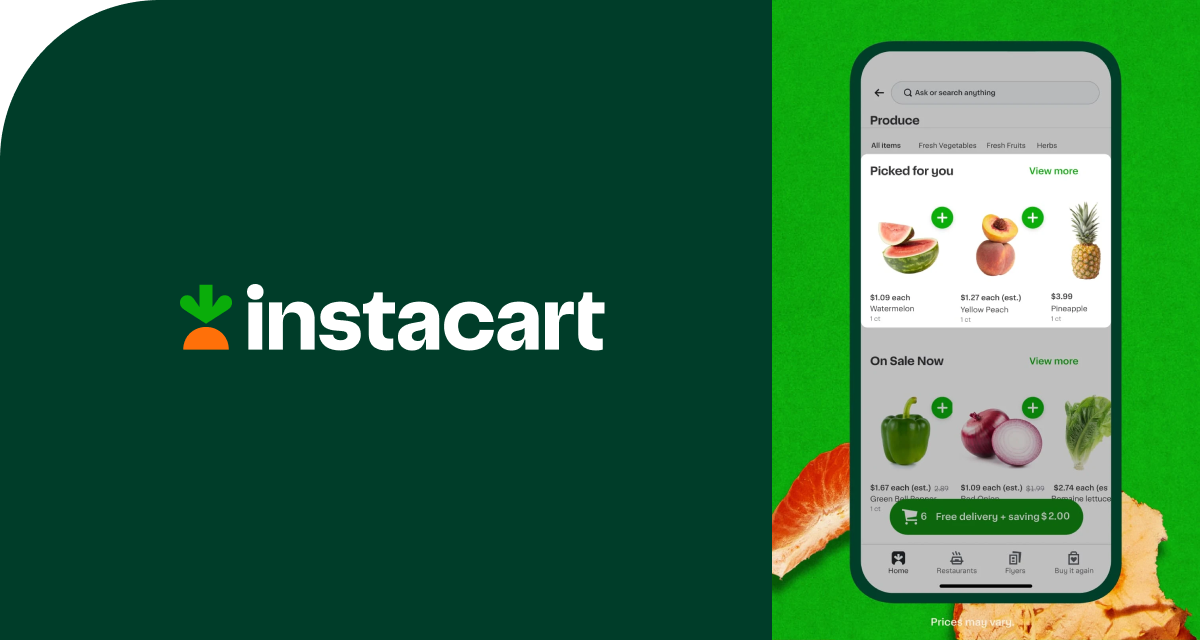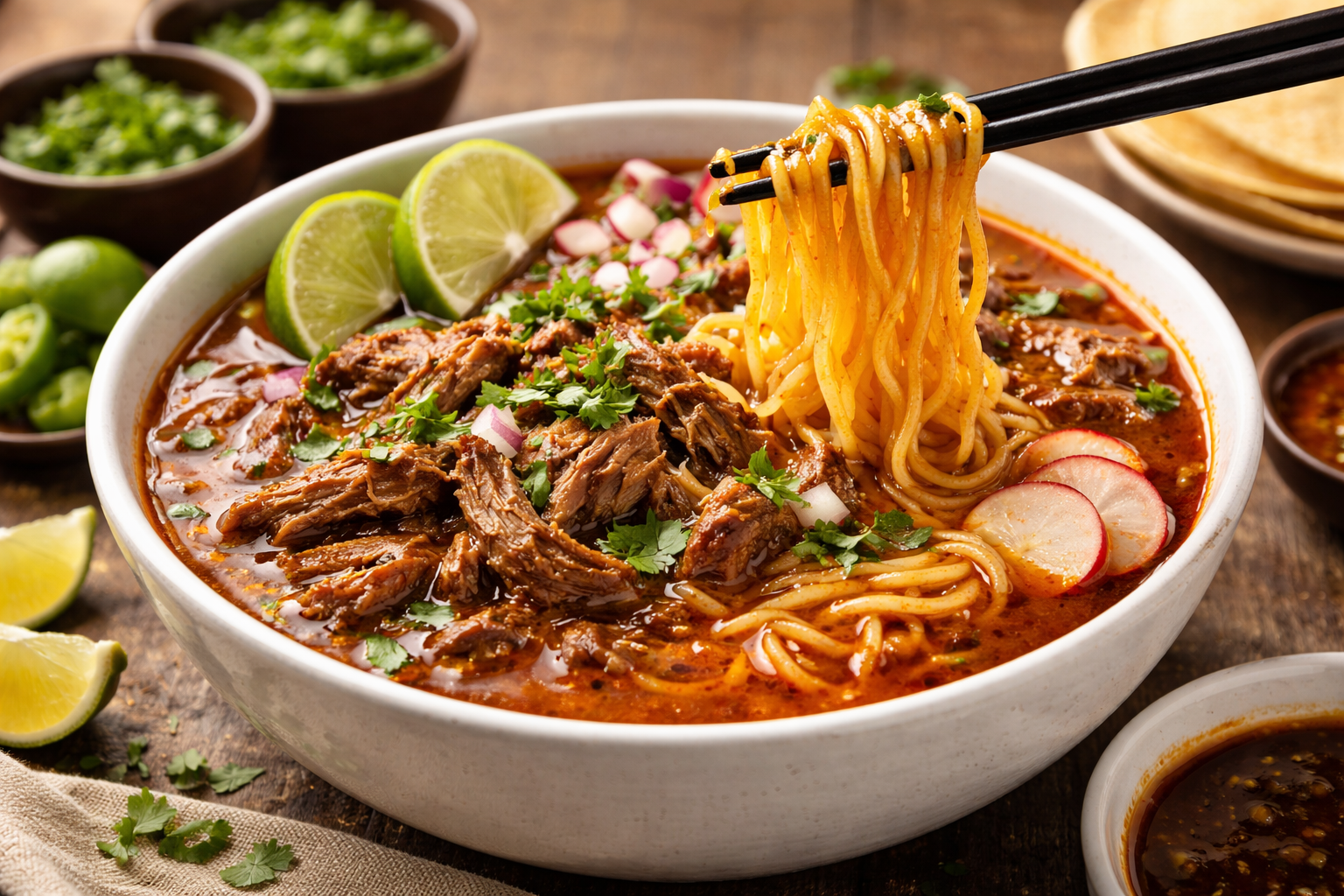Instacart Earnings Report Driving Higher CPG Revenue in e-Grocery
Instacart recently released its 2024 financial results, confirming its status as a heavyweight in the e-grocery sector. According to the official Instacart Earnings Report, the company generated $33.5 billion in Gross Transaction Value (GTV), a 10% year-over-year increase. Instacart also saw a 9% jump in total orders, exceeding 294 million. For Q4 2024, orders grew by 11% and GTV by 10%. These metrics are pivotal for brands seeking new ways to multiply CPG revenue, as Instacart’s core user base keeps expanding.
Key figures from Instacart’s 2024 performance

Surging GTV and orders
The $33.5 billion GTV encapsulates how Instacart maintains consumer interest and secures its leading place in e-grocery. When nearly 294 million orders move through a single platform every year, brands can harness broad market access. With each order, a wider set of products gains visibility—crucial for those seeking new audiences.
Rising revenue and profitability metrics
Beyond top-line numbers, the Instacart earnings statement highlighted a total 2024 revenue of $3.38 billion, an 11% rise year-over-year. This revenue represented 10.1% of GTV. GAAP net income clocked in at $457 million (1.4% of GTV), showing that Instacart’s shift toward operational efficiency is paying off. Adjusted EBITDA soared 38% to $885 million, revealing a stable financial position. Brands with well-optimized listings and tailored advertising solutions can convert this platform strength into a real increase in CPG revenue.
Potential gains for cpg brands
Meeting demand for smaller baskets
Instacart lowered its basket minimum for $0 delivery (from $35 to $10) for Instacart+ members, opening the door for smaller, more frequent orders. That encourages impulse purchases—great news for new or specialty items. By positioning single-serve or add-on products strategically, brands can capture attention during these “small runs.”
Long-term growth through new expansions
Instacart’s push beyond groceries—including Restaurants and Caper Carts—creates multiple entry points for product discovery. Larger user traffic also means more robust shopper profiles. With AI analytics running behind the scenes, Instacart can match user buying patterns to relevant items, surfacing your product to receptive audiences.
The Future of Convenience: How Consumers Shop and Order Groceries Online
The latest AI-driven survey on online grocery shopping habits reveals that convenience continues to be the driving force behind digital grocery adoption. With 8,756 respondents across the U.S., key insights show a strong preference for Instacart as a major player in the online grocery space, time savings as the primary motivation, and a shift toward purchasing snacks, beverages, and pantry staples online.
Key Findings:
- Instacart continues to grow, with 27% of respondents choosing the platform for grocery delivery.
- Time efficiency is the leading reason for online grocery shopping, outweighing concerns like crowd avoidance or transportation hassles.
- Snacks, beverages, and pantry staples are the top product categories, purchased 4.4x more often than fresh produce or dairy.
- Evening shopping is the norm, with nearly 80% of consumers placing orders between 4 PM – 9 PM.
- Extra fees are the biggest frustration, with 73% of shoppers citing delivery, service, and tipping costs as major pain points.
For CPG brands, these insights present a clear opportunity: optimizing product visibility in top-selling categories, leveraging convenience-driven marketing, and addressing consumer frustrations through pricing strategies and promotions. As online grocery continues to evolve, brands that align with consumer behavior will gain a competitive edge in the digital marketplace.
Leveraging machine intelligence for revenue growth
Instacart leans on technology for better shopper experiences. From algorithmic recommendations to real-time order batching, machine intelligence drives operational and marketing decisions. For brands, this boils down to actionable insights. You can see, for example, that midday snackers are increasingly drawn to high-protein bars. Armed with that info, you might tweak packaging or run targeted ads that appear during lunchtime.
Pair these insights with advertising solutions on Instacart, and you can run pinpoint promotions to the exact shopper segments you want. The platform’s data analysis, combined with advanced targeting, reduces guesswork and moves you closer to direct conversions. For any CPG aiming to expand market share, that’s a game-changer.
Next steps for CPGs using Instacart’s momentum
Instacart expects Q1 2025 GTV of $9.0–$9.15 billion, which suggests 8–10% continued growth. Adjusted EBITDA is projected at $220–$230 million. While average order values might drop slightly due to more restaurant orders and the $10 basket rule, total orders should keep climbing.
Instacart’s lower $10 basket threshold creates fresh opportunities for quick, single-serving foods. Brands can highlight convenient recipes that prompt a last-minute ingredient purchase during a small order. A simple dish like this Spicy Avocado Hummus Dip (8 ingredients, ready in under 20 minutes) can be a compelling reason to add an extra item or two to a cart, driving incremental CPG revenue.
For brands seeking to boost CPG revenue, this outlook means it’s time to solidify your presence on the platform. Here are a few tactics:
- Optimize product listings: Ensure titles, descriptions, and photos clearly highlight product benefits.
- Test new bundles: Smaller baskets can include single-portion items or promotional combos.
- Invest in platform ads: Lean into Instacart’s advertising solutions to reach high-intent shoppers.
- Track performance in real time: Use machine intelligence tools to monitor ROI on ad spend and to catch changing buyer behaviors early.
These steps let you ride Instacart’s wave of growth instead of getting overshadowed by competitor offerings.
FAQs
Smaller brands can use targeted advertising solutions—like sponsored product placements—and highlight unique selling points in product descriptions. Niche products often thrive when properly showcased to the right shopper segments.
Machine intelligence lets Instacart match shoppers with products they’re more likely to buy. For CPGs, that means valuable data for product development, pricing, and promotional strategies that align with real shopper habits.
Yes. Many companies see immediate lifts in impressions and conversions. Instacart’s user base is actively shopping, so well-positioned ads can generate sustained interest and repeat purchases, fueling CPG revenue growth.
By dissecting these Instacart earnings results and leveraging the platform’s machine intelligence backbone, CPGs have a direct pathway to higher e-grocery sales. Instacart’s $33.5 billion GTV—and ongoing investment in expanded services—signals that brands able to adapt and innovate will likely thrive in the near-term future.




